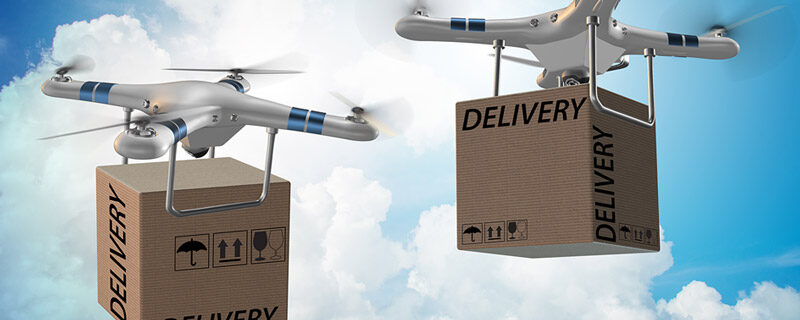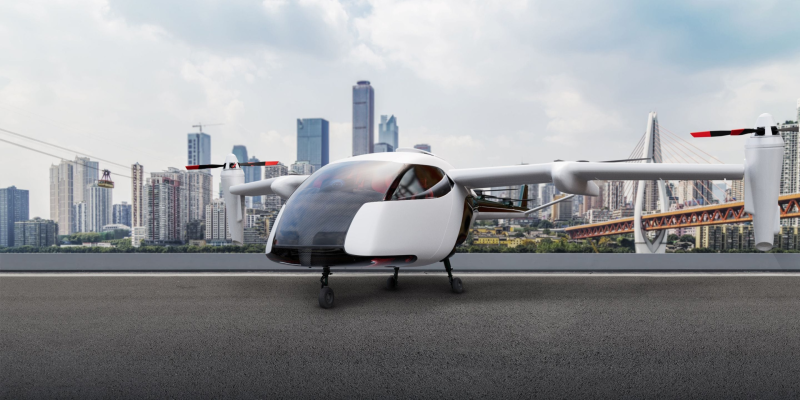Drone logistics has emerged as a promising solution to revolutionize the delivery industry. With the potential to offer faster, more efficient, and cost-effective transportation of goods, drone logistics is capturing the attention of businesses and consumers alike. This article delves into the feasibility, market potential, and impact of drone logistics, with a special focus on companies like Amazon Prime Air.

Feasibility of Drone Logistics
Technological advancements in drone technology have made it possible to envision a future where drones are a common sight in the skies, delivering packages to our doorsteps. Modern drones are equipped with advanced navigation systems, capable of autonomous flight and real-time obstacle avoidance. However, several challenges remain. These include battery life limitations, payload capacity, and the need for robust communication systems to ensure safe and reliable operations. For example, most delivery drones can travel up to 10-15 miles on a single battery charge and carry payloads of up to 5-10 pounds.
Market Analysis of Drone Logistics
The global market for drone logistics is projected to grow significantly in the coming years. According to recent market research, the drone logistics market size was USD 1,361.27 million in 2024 and is expected to reach USD 82,238.99 million by 2034, with a compound annual growth rate (CAGR) of 50.7%. Key factors driving market growth include increasing demand for faster delivery services, growing e-commerce, and the cost-effectiveness of drone delivery compared to traditional modes of transport. The commercial sector is expected to lead the market, with significant contributions from the healthcare and pharmaceutical segments.
Key Companies in Drone Logistics
Amazon Prime Air is one of the most notable players in the drone logistics space. Amazon has been actively developing its drone delivery service, aiming to provide customers with packages within 30 minutes of placing an order. Other companies, such as Zipline and Wing (a subsidiary of Alphabet), are also making significant strides in this field. These companies are leveraging advanced technologies to overcome challenges and expand their operational capabilities. For example, Zipline has successfully implemented drone deliveries of medical supplies in remote areas.
Impact of Drone Logistics
The environmental impact of drone logistics is a key area of interest. Drones have the potential to reduce carbon emissions compared to traditional delivery methods, contributing to a more sustainable future. Economically, drone logistics could lower operational costs for businesses and potentially reduce delivery fees for consumers. Socially, the widespread adoption of drone logistics could create new job opportunities in the drone manufacturing and maintenance sectors. Additionally, drones can provide critical support in disaster relief and medical deliveries.
Ethical and Regulatory Considerations
The rise of drone logistics also brings ethical and regulatory challenges. Privacy concerns arise as drones equipped with cameras and sensors navigate residential areas. Data security is another critical issue, as drones must transmit and store sensitive information. Regulatory frameworks are being developed to address these concerns and ensure safe and responsible drone operations. For example, airspace regulations and limitations on payload capacity are key factors that can hamper widespread commercialization.
Conclusion
Drone logistics holds great promise for transforming the delivery industry. While there are still technical and regulatory hurdles to overcome, the potential benefits are substantial. Companies like Amazon Prime Air are leading the way, demonstrating the feasibility and potential impact of drone logistics. As technology continues to advance and regulations evolve, drone logistics may become a common and integral part of our daily lives.
Frequently Asked Questions
- How far can drones travel for delivery?
- Modern delivery drones can typically travel up to 10-15 miles on a single battery charge.
- What is the maximum payload capacity of delivery drones?
- Most drones used for logistics can carry payloads of up to 5-10 pounds.
- Are drone deliveries safe?
- Drone deliveries are designed to be safe, with multiple safety features and regulatory guidelines to ensure their secure operation.
- How do drones avoid obstacles during delivery?
- Drones use advanced sensors and AI algorithms to detect and avoid obstacles in real-time.
- What are the main challenges in drone logistics?
- Key challenges include battery life, payload capacity, regulatory hurdles, and ensuring data security.
- How will drone logistics impact jobs?
- While drone logistics may reduce the need for some traditional delivery jobs, it will create new opportunities in drone manufacturing, maintenance, and operations.
References
Drone Logistics and Transportation Market Size, Report By …
Drone Logistics and Transportation Market – Report
Drone Logistics and Transportation Market
Revolutionizing Logistics: “Drone Package Delivery Systems, …





